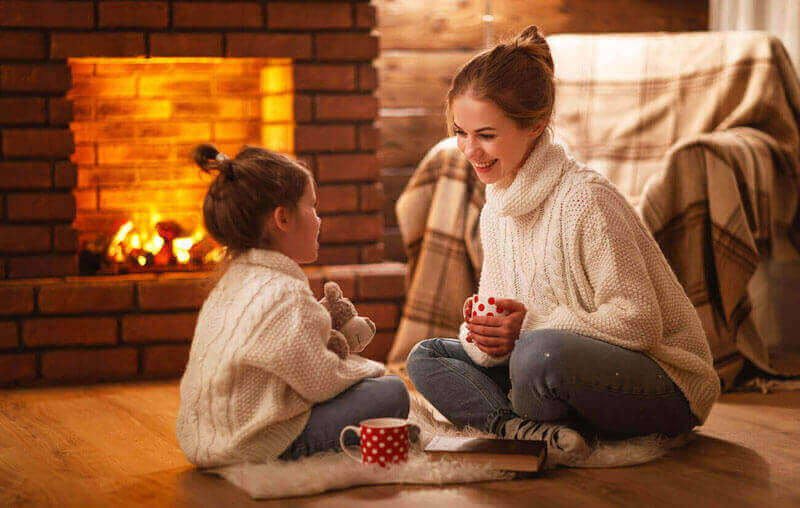Sometimes when heating up the home wood isn’t cutting it. Perhaps you wish for more heat or a wide berth of heat so that the family doesn’t all have to be huddle right in front of the fire. Maybe you want the aesthetic of a flame on wood but not the heat with it, just because you like the look. Perhaps you want a safer or quicker start-up.
Artificial Firelogs
These are logs that are, in essence, candles. They tend to contain a ton of wax along with their wood, allowing for a long burn. When being lit aflame, they also don’t tend to put up much fight. And just like candles, they don’t desire much attention as they go for hours on end. They are environmentally friendly due to creating fewer greenhouse gasses when burnt.
These firelogs also tend to look pretty, and some are even further environmentally safe by using recycled wood bits to be formed. They also don’t create much mess, only a little bit ash at the end, but in contrast, most don’t offer an authentic experience. Replacing the smell of wood-burning with chemical smell or no smell, no crackling or popping less explicitly designed to do such, and the worst part, they aren’t as hot.
These logs don’t tend to burn as warm as the real deal, and if used the way they instruct, are unlikely ever to do so. They are also not great for cooking, not only due to the heating issue but also due to the flavoring. The wax and assortments of chemicals included are likely to affect the flavors of anything used. At least they look pretty.
Coal and Charcoal
There are fireplaces made for coal and stoves as well; the original rivals to wood. So firstly, if you don’t have a chimney or fireplace (or stove) made to burn these bad boys indoors—don’t use them—they burn much hotter and release much more Carbon Monoxide or CO than their contemporary. This is for your safety as if not correctly done, the CO in the air will build and build till you suffocate from lack of oxygen, or the materials used for the chimney may not be able to handle the extreme heat.
Now, let’s say you got the right stuff; you did your research on being ready to use coal in a fireplace and follow directions. Well, good news, you can cook on them, and many like the unique taste of coal-cooked food. Coals are hot, way hotter than most woods, and even after the flames die, the coals likely are smoldering and thus significantly heat up the home. These are the real champions of heating for sure. Coals also don’t produce creosote—mostly—many don’t smoke much at all. Again, however, they produce tons and tons of CO, so that’s a trade-off.
Coals do demand attention, the airflow does need a little managing, and it is critical to make sure oxygen is getting blown into the open entrance to force the smoke up the chimney. They also have a ton of clean-up and don’t make spectacular flames. Unlike the Artificial firelogs, which are looks and ease of use over substance, these are all substance and utility-based.
Gas Logs and Inserts
Gas is the last regularly used heating substitute, besides electricity, but you may as well get a heater and call it a day. Gas comes in a few forms for fireplaces, Gas logs and Gas inserts being what we will focus on, but to cover our bases, Gas fireplaces do exist. Gas fireplaces can be installed if you don’t already have a fireplace and come in Vented and Ventless varieties. Vented means a vent installed in the wall for the exhaust and ventless, meaning the exhaust is let into the house. They burn rather well and form pretty flames. They don’t need a chimney or masonry but are expensive.
If you have a fireplace already, you can convert it into a Gas fireplace with a Gas insert. Inserts do produce less heat than the built-in variety but should do the job fine. Inserts are a box in a box, heating the air in between the boxes. If you are going green, you will be glad to hear they have natural gas options and not just propane. There are some visual cons, though, as due to being two boxes, it isn’t as easy to watch the flames, nor does the fire tend to get as big and wavy as wood. It is possible to cook with these but not recommended; make sure before trying that the fuel is not toxic to consume.
Gas Logs are cheaper than the other two gas alternatives; ceramic logs over a small gas pipe. Gas logs come vented or ventless, just like its siblings. The deal with cooking is the same. These logs are not very good at warming a room and mainly serve to look nice. At least the view isn’t obscured.

